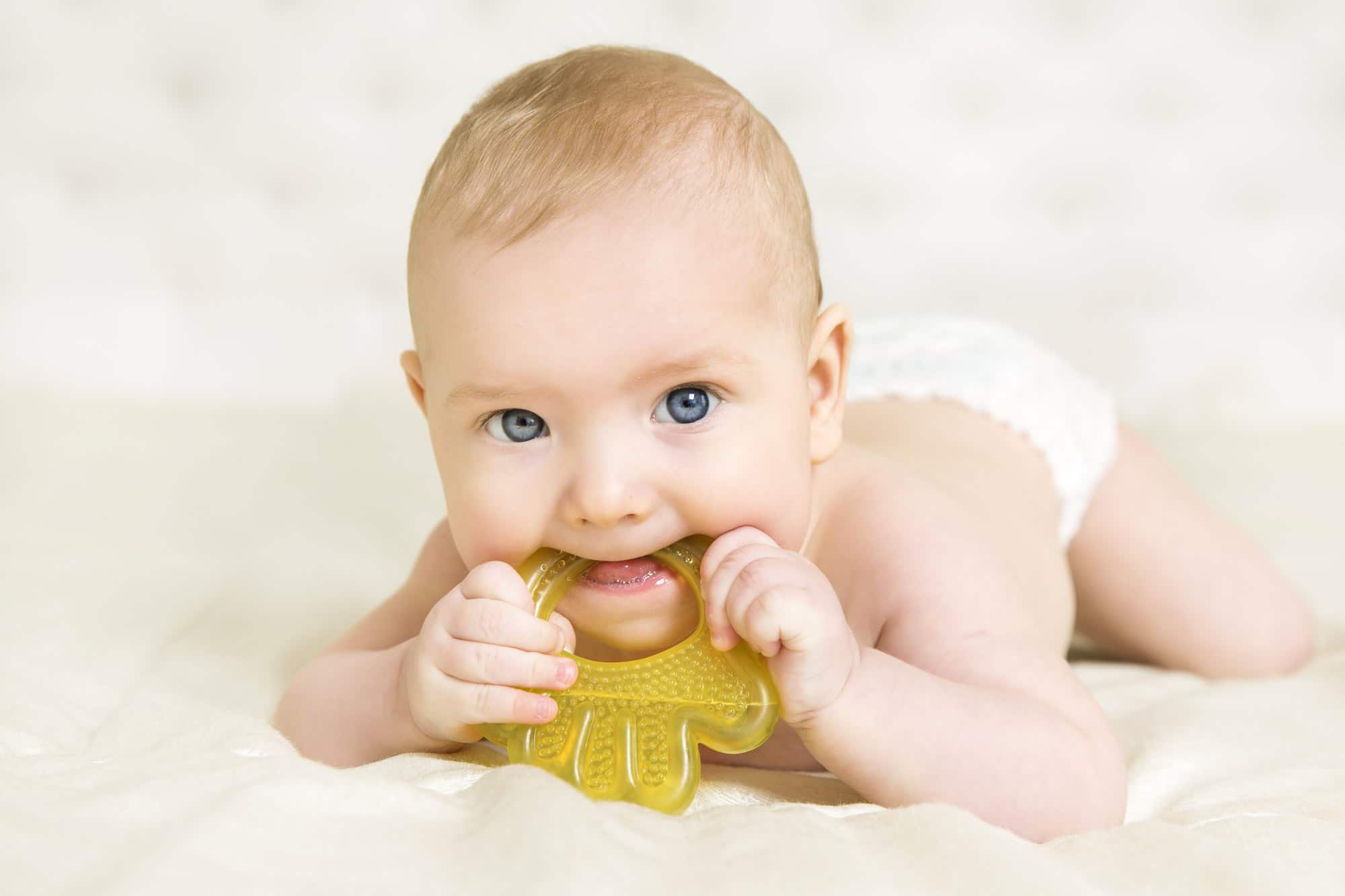Sooner or later all parents experience their baby’s transformation from a happy, easy-going bundle of toothless grins into a teething baby: otherwise known as a crabby, sleepless, food-refusing, cranky-pants.
As difficult as your teething baby might be, your child is to be pitied; the process of growing teeth is anything but comfortable for your little tyke, even if it is necessary. The most parents can do is to figure out if teething is really the cause of upset and then take action to soothe the discomfort as best they can.
Diagnosing Teething: Zeroing in On The Cause
A teething baby isn’t the first thing most parents suspect when suddenly their baby isn’t sleeping normally or is refusing to eat and exhibiting a rash. Teething is, however, the cause of a wide variety of seemingly unassociated complaints, meaning that it is best to put teething near the top of your checklist when your baby begins fussing or sprouting odd symptoms at random, especially if they are in the right age range.
The timing of a baby’s first tooth varies widely; anywhere from three months to past one year can be normal. The average age for those first chompers to pop up is between 4 and 7 months.
Symptoms of Teething: What to Look For
If your child falls within the above mentioned age bracket, knowing what to look for can provide real peace of mind. Irritability and fussiness are some of the least worrisome effects of teething. Teething babies also break out in random rashes on their body or sometimes experience another bout of baby acne on their faces.
Other symptoms common to teething babies include: loss of appetite, not wanting to nurse, sleeplessness, wanting a binky or needing to suck more than usual, lots of drooling, more spitting up, mouthing on everything, and biting or chewing on fingers, toes, and pretty much anything that fits into the mouth.
Symptoms Falsely Associated With Teething
Unfortunately, there is a lot of misinformation on the internet. If you fall on the wrong article, you may be left assuming that your baby is teething when they are really experiencing a different problem. One of the common claims you'll read online is that a baby will get a rash on their bottom when teething. Diaper rash is not a symptom of teething; if your baby gets a rash from teething, it will be on their face or neck.
Another common claim is that it is common for a teething baby to get a fever. While it is possible for a teething child to suffer from a low-grade fever, it is very rare. If your baby is suffering from a fever, take them to a doctor. You don't want to miss a potentially life-threatening illness because you assumed your baby is just teething.
Teething also does not cause a runny nose. This is another symptom often associated with this time in a baby's life. If your child is experiencing a runny nose that doesn't go away after a few days, take them to their doctor for an evaluation. They may be sick.
Always consult with your child's pediatrician if they experience any symptoms that seem odd to you. It's better to be safe than sorry, especially when your baby is young and particularly vulnerable to illness. Don't ever assume that something abnormal is nothing to worry about, especially if it persists.
Nothing Beats A Hands On Evaluation!
If all these symptoms still leave you flummoxed, a visual inspection of your child’s mouth will help settle the matter once and for all. When newborns first grin, parents notice their gums have a rim running along the top. As teeth begin to come up from below, this ridge flattens and disappears.
If baby’s gums have become ridgeless, flatter, are swelling, and display bumpy marks, it is a safe bet that there are teeth just waiting to pop out.
The content of this article should not be taken as professional medical advice. Always seek the opinion of a qualified, licensed medical professional before making decisions that affect your health or your family's health.
The image featured at the top of this post is ©inarik/ via Getty Images.
